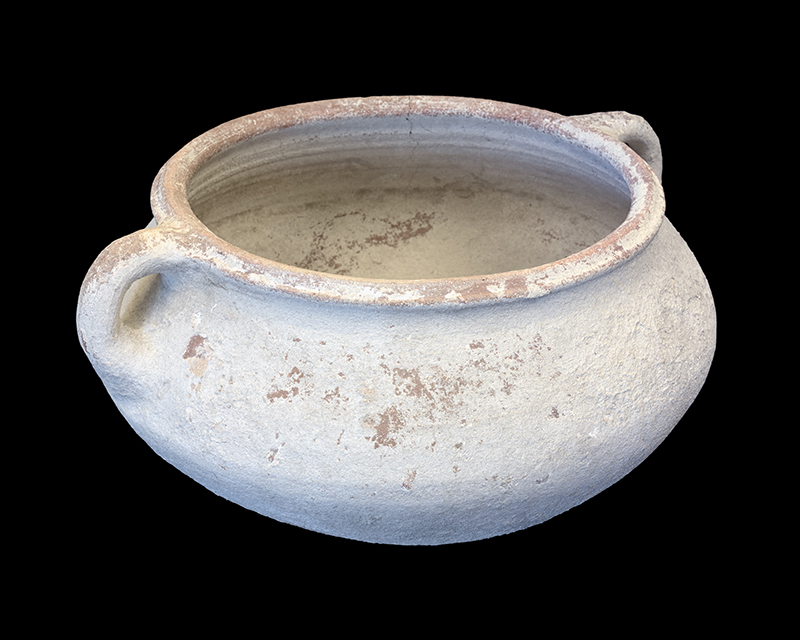[Cooking Pot]

The cooking pot, excavated in 1996, was donated by the Megiddo Expedition, Tel Aviv University in 2001. This is a typical example of a cooking pot from the late Iron Age, confirmed by similarly-shaped finds at Hazor and Samaria. During this period Megiddo was an urban center of pottery production. Unlike the more rounded cooking pots of an earlier age, the body of this one is slightly squat. Also typical of this period is the ridged rim and two handles attached near the top. Note as well the discolored patches on the side, caused either by exposure to the elements, or by a fire which the assemblage of pottery in the stratum (IV-A) indicates occurred during this period. If the cause of the patches is indeed the fiery destruction, it is all the more astonishing that the pot survived intact.
